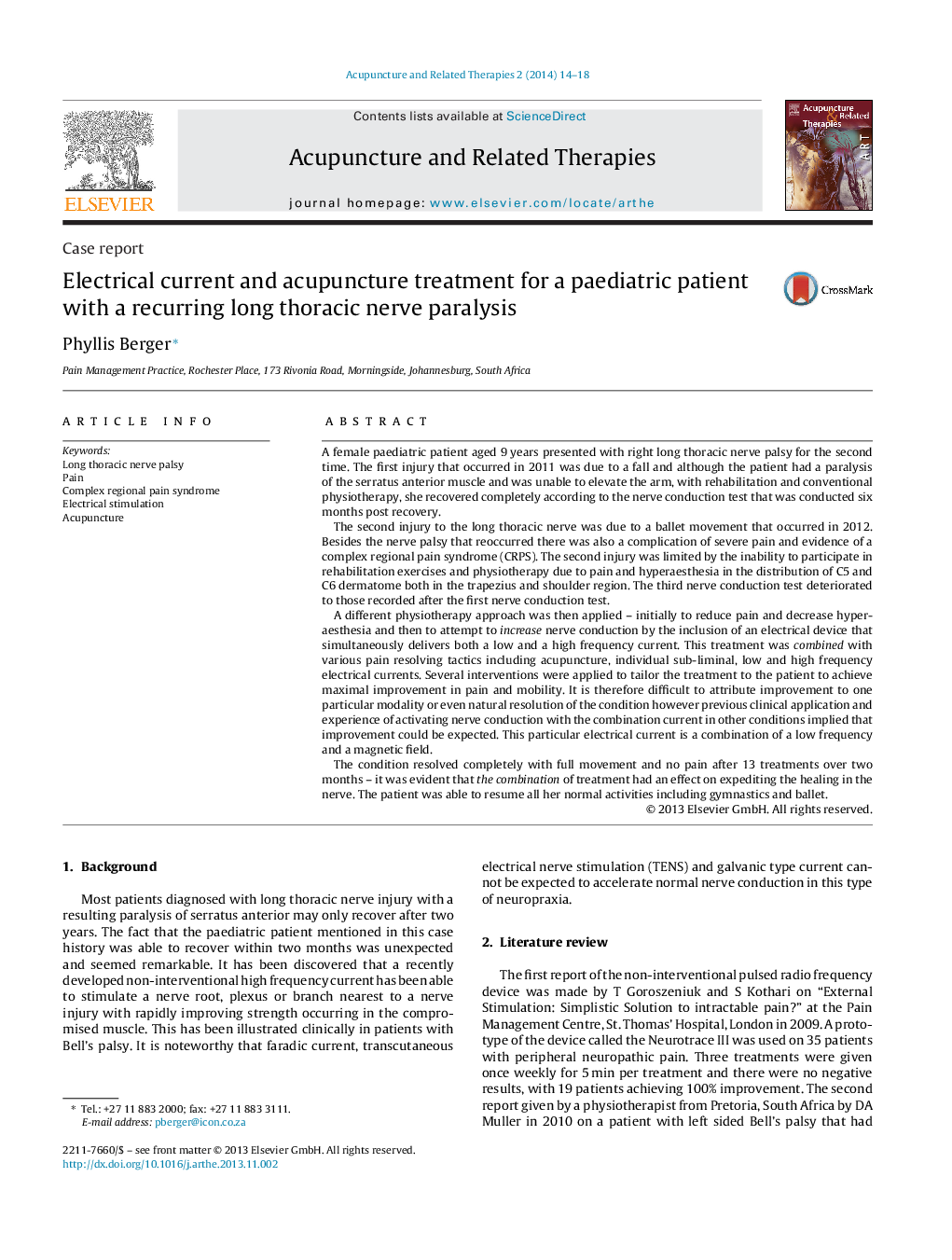| Article ID | Journal | Published Year | Pages | File Type |
|---|---|---|---|---|
| 2613905 | Acupuncture and Related Therapies | 2014 | 5 Pages |
A female paediatric patient aged 9 years presented with right long thoracic nerve palsy for the second time. The first injury that occurred in 2011 was due to a fall and although the patient had a paralysis of the serratus anterior muscle and was unable to elevate the arm, with rehabilitation and conventional physiotherapy, she recovered completely according to the nerve conduction test that was conducted six months post recovery.The second injury to the long thoracic nerve was due to a ballet movement that occurred in 2012. Besides the nerve palsy that reoccurred there was also a complication of severe pain and evidence of a complex regional pain syndrome (CRPS). The second injury was limited by the inability to participate in rehabilitation exercises and physiotherapy due to pain and hyperaesthesia in the distribution of C5 and C6 dermatome both in the trapezius and shoulder region. The third nerve conduction test deteriorated to those recorded after the first nerve conduction test.A different physiotherapy approach was then applied – initially to reduce pain and decrease hyperaesthesia and then to attempt to increase nerve conduction by the inclusion of an electrical device that simultaneously delivers both a low and a high frequency current. This treatment was combined with various pain resolving tactics including acupuncture, individual sub-liminal, low and high frequency electrical currents. Several interventions were applied to tailor the treatment to the patient to achieve maximal improvement in pain and mobility. It is therefore difficult to attribute improvement to one particular modality or even natural resolution of the condition however previous clinical application and experience of activating nerve conduction with the combination current in other conditions implied that improvement could be expected. This particular electrical current is a combination of a low frequency and a magnetic field.The condition resolved completely with full movement and no pain after 13 treatments over two months – it was evident that the combination of treatment had an effect on expediting the healing in the nerve. The patient was able to resume all her normal activities including gymnastics and ballet.
